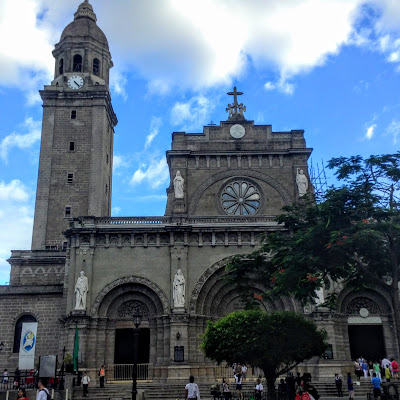Manila Cathedral - A Timeless Beacon of Faith and Resilience
Introduction:
Manila Cathedral, also known as the Cathedral-Basilica of the Immaculate Conception, stands as a testament to the rich history and religious traditions of the Philippines. This iconic landmark, located in the heart of Manila's historic walled city of Intramuros, holds great significance both for its architectural beauty and its role as a spiritual sanctuary. With a legacy spanning centuries, the Manila Cathedral continues to inspire awe and reverence, embodying the resilience and enduring faith of the Filipino people.




Historical Significance:
Originally built in 1581, the Manila Cathedral has stood witness to numerous historical events that have shaped the country. From the Declaration of independence to the restoration of democracy, it has served as a symbol of hope, unity, and spiritual strength throughout the nation's tumultuous past. The cathedral has also welcomed papal visits and played host to the ordination of bishops, elevating its importance within the Catholic Church.


Architectural Marvel:
The Manila Cathedral's architectural splendor is a harmonious fusion of various styles, reflecting the influences of Spanish Baroque, neoclassical, and Renaissance elements. Its grand facade, featuring intricate carvings and statuary, captures the eye and imagination of visitors. The majestic bell towers, soaring spires, and meticulously designed stained glass windows further enhance the ethereal beauty of the cathedral. Inside, one is greeted by an atmosphere of serenity and tranquility, where vibrant frescoes, ornate chandeliers, and religious statues create a space conducive to prayer and reflection.





A Testament to Resilience:
Throughout its existence, the Manila Cathedral has faced numerous challenges, including destruction caused by earthquakes, bombings during World War II, and the ravages of time. However, each time, it has risen from the ashes, rebuilt, and restored to its former glory, demonstrating the indomitable spirit and resilience of the Filipino people. The cathedral's survival is a symbol of hope, serving as a constant reminder that faith can overcome adversity and unite communities in times of hardship.





Cultural and Spiritual Significance:
Beyond being a religious institution, the Manila Cathedral holds immense cultural significance. It serves as a gathering place for the faithful, where celebrations and religious ceremonies take place, fostering a sense of community and belonging. The cathedral has also become a popular tourist destination, attracting visitors from all over the world who come to marvel at its grandeur and immerse themselves in the country's rich history.















Conclusion:
The Manila Cathedral stands as a timeless beacon of faith, resilience, and architectural excellence. Its historical significance, stunning aesthetics, and enduring legacy make it a cherished treasure in the hearts of Filipinos. As a sanctuary of spirituality and a symbol of hope, the cathedral continues to inspire countless individuals, inviting them to find solace, strength, and renewal within its hallowed walls. Whether you are a history enthusiast, a devout Catholic, or an admirer of architectural beauty, a visit to the Manila Cathedral promises an experience that will leave a lasting impression, reminding us all of the enduring power of faith and the importance of preserving our cultural heritage.
#church,
#simbahan,
#manila,
#istariray23laboy,
#istariray23travel,
#ManilaCathedral,
#ManilaCathedralChurch,
#istariray23photography,
#MinorBasilicaandMetropolitanCathedraloftheImmaculateConception,























































.jpeg)














